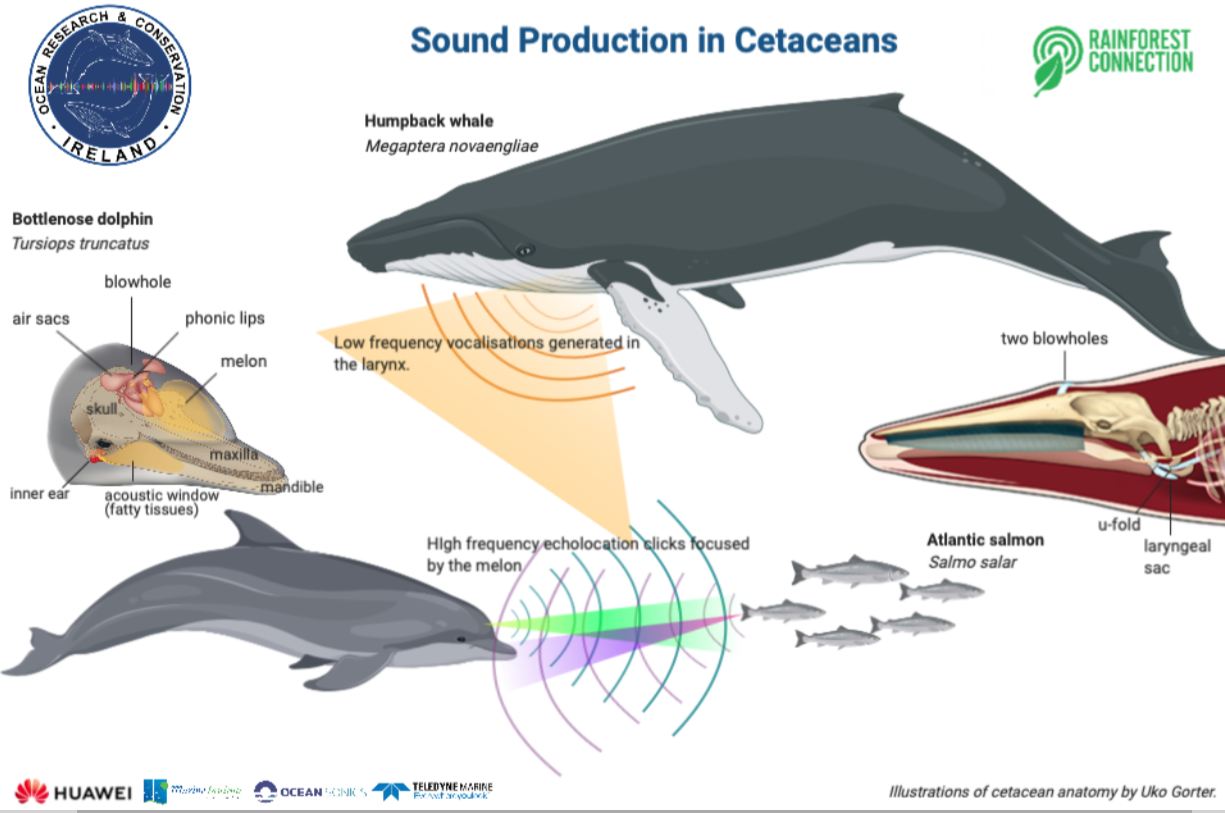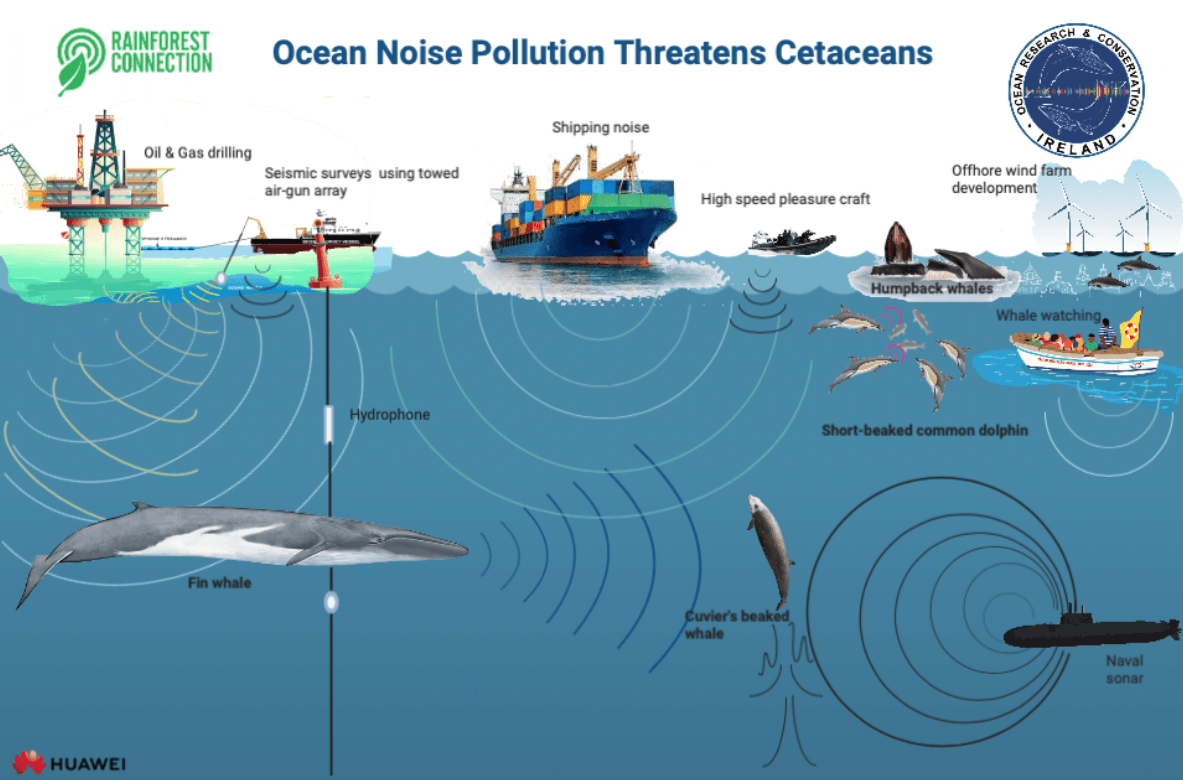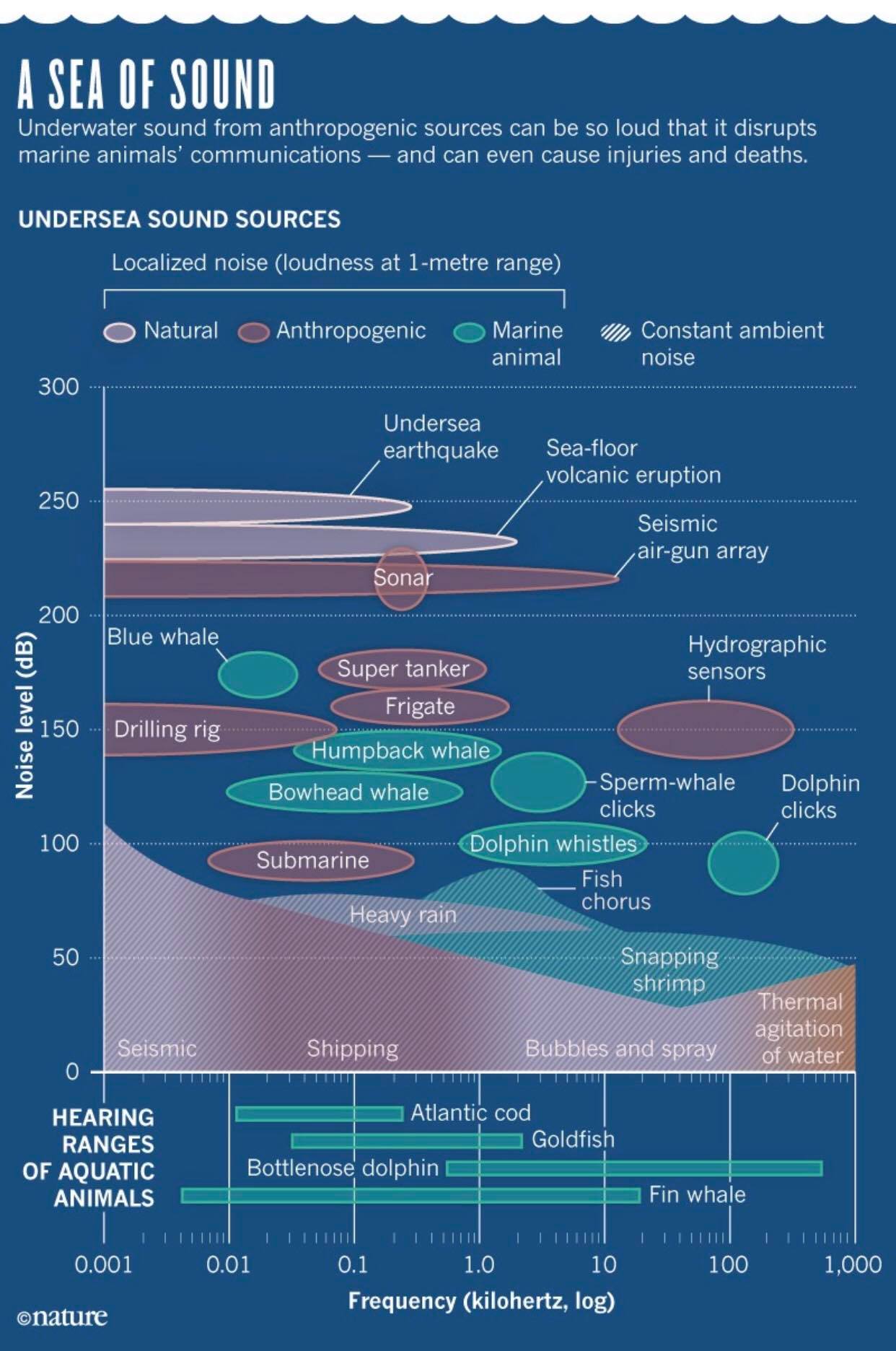Bioacoustics
Bioacoustics research involves the detection, systematic classification and analysis of animal acoustic emissions.
Ocean Research & Conservation Ireland bioacoustics research focus' on cetaceans off the south-west coast of Ireland, with an emphasis on recording baleen whale species in real-time to relay accurate automated detections with the help of artificial intelligence (AI) through machine learning, to maritime traffic to allow them to reduce their speed in time to minimise the risk of disturbance and ship strike of protected species.
Many marine organisms produce sounds, including invertebrates (e.g. "snapping shrimp"), fishes, seabirds and mammals. Cetaceans (whales, dolphins and porpoise) are wholly aquatic for their entire lives and as visibility is limited to the photic zone, they have evolved to adapt to use sound for vital life history strategies such as navigation, communication and for finding prey.
Odontocetes or toothed cetaceans, produce a range of highly complex vocalisations like whistles, barks, chirps and squeaks for communication and bio-sonar, or high frequency echolocation clicks and burst pulses for hunting. Dolphins high frequency echolocation clicks have been reported to travel to a distance of 350 meters, with frequencies lower than 25kHz detectable up to 1 - 5 km. The sperm whale (Physeter macrocephalous) can produce sharp, broadband impulsive series of signals or clicks at more than 30 kHz with an estimated source level of 180 dB, that can travel within 10-15 km.
Some lower frequency sounds may be produced by the larynx, but most sounds, especially the higher frequency sounds, are produced by a complex system of air sacs and specialised soft tissues that vibrate as air moves through the air passage. The sound produced in the air sacs is channeled through the fatty tissues of the melon. The toothed whale can alter the melon shape to produce a narrow or broad beam of sound. Sound is sent toward a target such as a school of fish and the sound is echoes back through the mandible and into the fatty tissues and inner ear where a signal is sent to the animals brain for cognitive synthesis.
Mysticeti or baleen whales in comparison, produce low frequency sounds that can travel hundreds of kilometres, allowing animals to communicate over vast distances. The fin whale (Balaenoptera physalus) can produce infrasonic sounds, which are inaudible to the human ear (20-40 Hz) (Watkins et al., 1987).
Baleen whales only use their larynx for sound production. Inside the larynx is a thick, u-shaped, ridge of tissue called the u-fold, (homologous to the vocal folds of other mammals). The u-fold is found adjacent to the laryngeal sac. Baleen whales contract muscles in the throat and chest, causing air to flow between the lungs and the laryngeal sac. The alternating expansion and contraction of the lungs and sac pushes air through the u-fold, causing it to vibrate and produce sound. These vibrations from the laryngeal sac propagate through the ventral throat pleats into the surrounding water as sound waves. Baleen whales can change the shape of the laryngeal sac to alter the frequency and/or amplitude of sounds produced.
Ship engines, dredging, underwater blasts from airguns for seismic surveys and oil and gas drilling are all filling our oceans with anthropogenic sound. There is growing international concern about the effect of the increasing din of ocean noise created by the culmination of human activities on cetaceans.
Short loud blasts of sound such as those given off by towed air guns during a seismic survey can cause physical injury to cetaceans hearing, either permanently or temporarily and has been associated with mass strandings of long-finned pilot whales. Persistent background noise such as from large container ships, can mask cetacean vocalisations and interfere with important communication for breeding and foraging.
Ultimately the disturbance may have population level consequences due to impacts on reproduction of energy budgets. Ship traffic has approximately doubled between 1950 and 2000, increasing sound levels by about 3 dB per decade, which is doubling noise intensity every ten years! In 2014, the International Maritime Organisation (IMO) released guidelines on reducing shipping noise.






